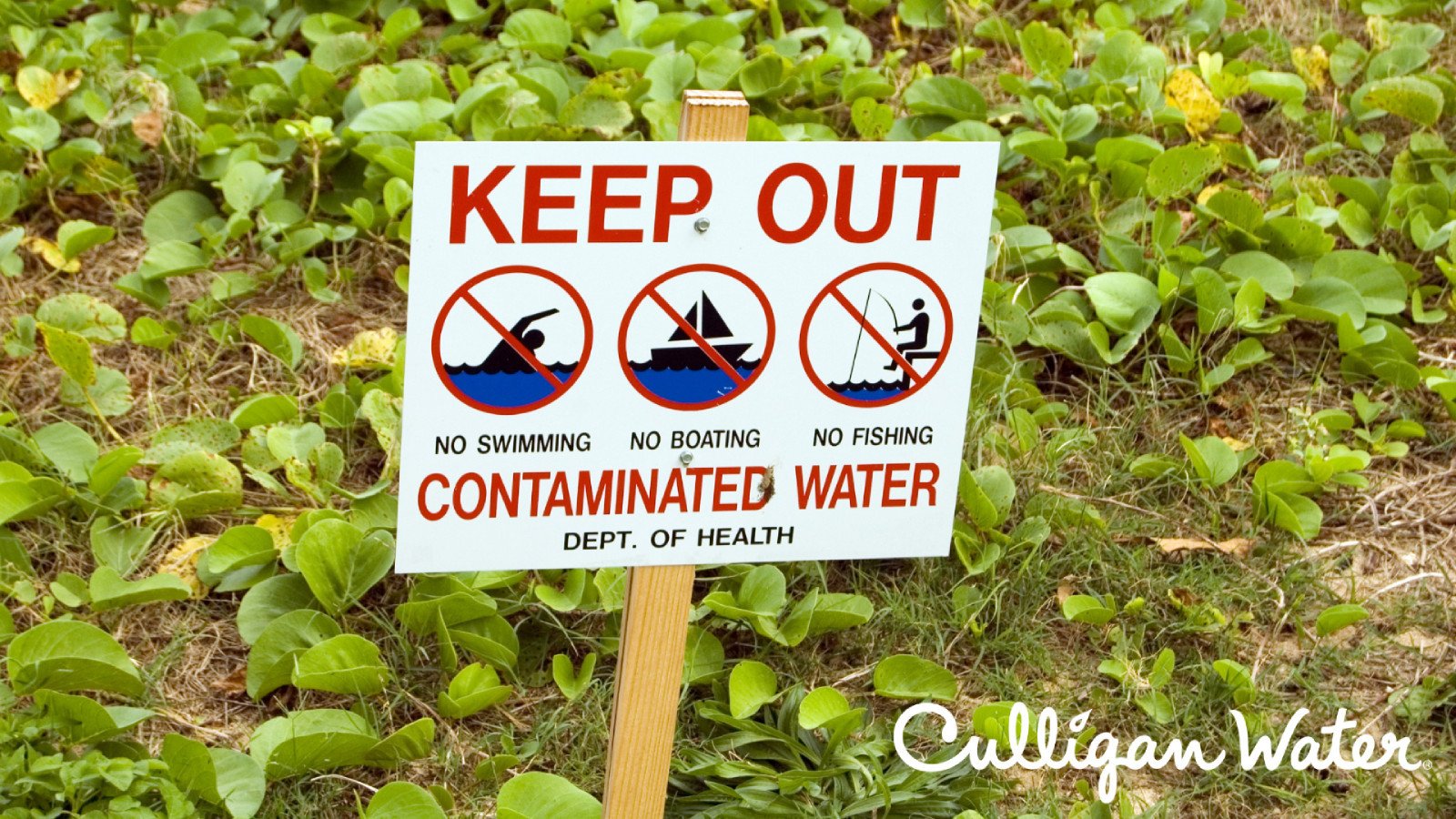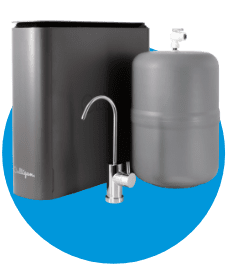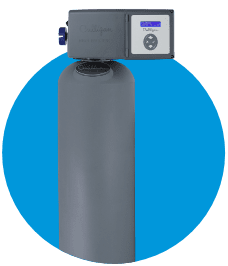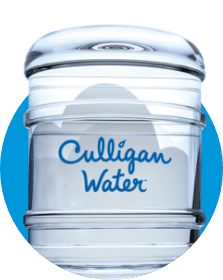EPA to Limit Toxic PFAS Chemicals in Drinking Water
Public concern for these harmful “forever chemicals” in drinking water has increased in recent years. Learn what these new EPA-regulated limits mean for you and how Culligan can help.
Posted in
Bottled Water,
Culligan Nation,
Drinking Water,
Drinking Water System,
PFOA,
PFOS,
Reverse Osmosis,
Water Filters,
Water Filtration System,
Water Problems

Find out what’s in your drinking water. Schedule a free water test from your local Culligan water expert.
In March 2023, the United States Environmental Protection Agency (EPA) proposed the first federal limits for six toxic per- and polyfluoroalkyl substances, more commonly known as PFAS, regularly found in drinking water. The EPA said this long-awaited protection, if approved, will save thousands of lives and prevent serious PFAS-related illnesses, including cancer.
The proposal would drastically lower limits to 4 parts per trillion, the lowest level that can be reliably measured, for two common types of PFAS compounds called PFOS, or perfluorooctane sulfonic acid, and PFOA, perfluorooctanoic acid. The EPA also wants to regulate the combined amount of four other types of PFAS.
This new recommendation is a big step toward improving the safety of drinking water in the United States. The EPA estimates that the proposal could reduce toxic PFAS exposure for nearly 100 million Americans.
Read on to learn more about PFAS. And find out what you can do to keep these contaminants* out of your water supply.
What Are Toxic PFAS in Drinking Water?
PFAS are a group of man-made chemicals that have been around since the 1940s. Because of their strong molecular makeup, they don't break down easily and are expensive to remove from water.
What were PFAS used for?
PFAS were commonly used in everyday goods and materials, such as:
- Stain- and water-resistant fabrics
- Non-stick products
- Cleaning products
- Paper and packaging materials
- Paints and polishes
- Fire-fighting foam
- Manufacturing
Once scientists understood what long-term exposure to PFAS could have on people, many companies started phasing them out. However, they may still be lingering in the environment and our drinking water.
How Did They End Up in the Water Supply?
PFAS can enter water sources and contaminate drinking water in many ways. Before the 2000s, manufacturers near lakes and rivers may have directly released contaminated water into those sources.
Smoke stacks from factories emitted the chemicals, which then drifted to the ground. When it rained, those chemicals dissolved and moved through the soil, entering groundwater.
As of 2015, the US no longer uses PFOA and PFOS in production, but the effects still linger. When left untreated, the chemicals can remain in the water for decades.
Widespread Exposure to PFAS
Since 2013, EPA testing has found PFOA in the drinking water of 6.5 million people. And the chemical was detected in 94 public water systems in 27 states. The majority of samples were below the EPA advisory level. But some statewide averages were up to 175 times higher than the EPA limit.
This testing was not comprehensive. So, PFOA and PFOS may be more widespread across America. And that includes private wells and small water systems, which weren’t part of the testing.
Those near factories, airports or military sites are particularly at risk for PFOA and PFOS in their drinking water.
Health-Related Effects of PFAS
What do PFAS do to your body?
Long-term exposure is a concern for PFAS. The chemicals can build up in the body over time so even small but consistent doses can be dangerous. Those health effects include:
- Birth defects and developmental issues during pregnancy or for breastfed infants - including low birth weight, advanced puberty or skeletal deformities
- Cancer (testicular and kidney)
- Liver tissue damage
- Weakened immune system (antibody production and compromised immunity)
- Thyroid hormone imbalances
What Can You Do to Remove PFAS from Water?
Are you wondering how to test for PFOA and PFOS in your drinking water? Contact your local Culligan water expert to find out if there are any contaminants in your water.
Testing your water can help you take the right steps toward providing your home and loved ones with cleaner and safer water.
Basic Water Testing
This option is free and takes less than 10 minutes. Your local Culligan water expert will discuss the results with you and go over your options for removing any contaminants that may be in your home’s water supply.
You can purchase a more comprehensive EPA-certified laboratory test to test for PFAS in your water.
Laboratory Water Analysis
Culligan’s lab test reveals harder-to-identify water problems. A water sample will be sent to our Illinois-based EPA-certified lab for in-depth analytical testing to see if there are any PFAS in your water.
Immediately test the water in your home if you experience any of the following:
- Water tastes "off"
- Water is not clear
- Water has an unpleasant odor
- Water bills increase unexpectedly
Culligan Product Recommendations and Solutions
Culligan offers several solutions to help drastically reduce PFAS in your drinking water.

Reverse Osmosis Drinking Water System
Culligan reverse osmosis systems match NSF and ANSI standards for PFOA and PFOS reduction.
The Culligan® Reverse Osmosis Drinking Water System with a Total Defense Cartridge was tested in laboratory and field applications by North Carolina State University in 2017. Culligan's solution reduced similar fluorochemicals, such as GenX, in tap water by 95% compared to untreated water.
The Culligan® Reverse Osmosis Drinking Water System with a Total Defense Cartridge was tested in laboratory and field applications by North Carolina State University in 2017. Culligan's solution reduced similar fluorochemicals, such as GenX, in tap water by 95% compared to untreated water.

Whole Home Water Filtration Systems
Custom Culligan® Whole Home Systems with dual carbon filters are proven to reduce PFAS in water at levels typically found in well water.

Bottled Water
If you’re looking for a short-term solution, Culligan bottled water is a great option. Culligan bottled water is produced at local bottling plants under strict standards set by the International Bottled Water Association. Contact your local Culligan water Expert for pricing and ordering information.
Contact Your Local Culligan water Expert
No one filters more than Culligan water.
Our Culligan water experts can help you understand the different types of PFAS and recommend the best treatment solutions for your common water problems. From carbon filtration to reverse osmosis filtered water, Culligan offers a range of products and services designed to remove even the toughest contaminants to provide cleaner, safer, and refreshing drinking water.
To learn more about the quality of your drinking water, connect with your local Culligan water expert.
Schedule your advanced water test or your free basic water test today!
*Contaminants may not be in your water.
